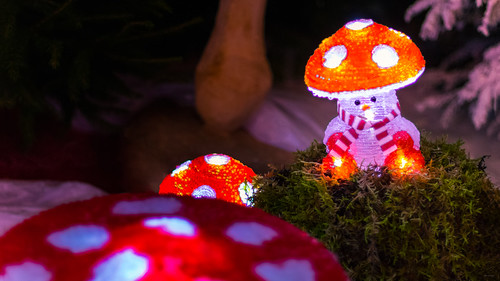As 14-3-3f interacts with nonphosphorylated and CKIIphosphorylated L1ICD, the issue arose regardless of whether fourteen-3-3f utilizes the recognized binding web site (RSLESD) for phosphorylation-dependent and ndependent conversation with L1. Notably, two previous reports showed that fourteen-3-3f interacts with phosphorylated and non-phosphorylated Tau protein and that two unique fourteen-three-three binding websites mediate these interactions [47,48]. Both of these research also showed that phosphorylation of the Tau protein by PKA enhanced its affinity for 14-three-3f. In line with this finding, we noticed that CKII phosphorylation enhances binding of 14-3-3f to L1ICD. These observations suggest a two-phase mechanism for the fourteen-3-3 L1 interaction: in a very first stage, 14-3-three binds to its non-phosphorylated L1 with fairly reduced affinity. Subsequent serine phosphorylation of L1, e.g. as a consequence of a physiological stimulus, then tightens the 14-three-3 L1 conversation. Phosphorylation of tyrosine 1176 (Tyr1176), a residue adjacent to the RSLESD sequence essential for 14-three-3 binding, has been revealed to prevent binding of L1 to the AP-two adaptor protein, therefore blocking L1 endocytosis [49]. Initial binding of fourteen-3-three to L1 prior to CKII phosphorylation may as a result also be managed by the phosphorylation position of Tyr1176, which could act as a regulatory signal. However, binding of L1 to CKII-phosphorylated 14-three-3f in vitro is not altered in the existence of AP-2 (E.M. Ramser, unpublished observations).Figure 6. Expression of fourteen-three-3f K49E prospects to a certain increase in L1-mediated neurite outgrowth.  Hippocampal neurons geared up from embryonic rat hippocampus ended up transfected by nucleofection with an expression plasmid for EGFP with each other with plasmids encoding both vacant vector (“Mock”), wild-sort fourteen-3-3f (“WT”) or 14-3-3f K49E (“K49E”). Subsequently, cells from every single Flufenamic acid butyl ester transfection were plated onto wells coated with PLL in mixture with Fc (“Fc substrate”) or L1-Fc (“L1-Fc substrate”). Right after incubation for 24 h at 37uC, cells have been set. A. The photographs show transfected neurons in three transfected teams grown both on Fc or L1-Fc substrates. B. Duration of the longest neurite for each mobile was calculated for neurons in the very same groups as in (A.). Values are expressed as suggest 6SEM. For each substrate and expressed protein, neurons from 3 transfections, three wells per transfection, ,30 cells for each well have been analyzed. Two-way ANOVA with repeated actions (for substrate) unveiled substantial outcomes of transfection (p,.05), substrate (p,.001) and interaction amongst transfection and substrate (p,.05). p,.01, p,.001, statistically important differences vs. fourteen-3-three K49E p,.05, p,.01, p,.001, statistically important differences in between neurons developed on Fc and L1-Fc (Bonferroni’s post-hoc take a look at, n = 3 transfections).The previously mentioned-talked about review on 14-three-3 – Tau interaction [47] showed that affiliation of fourteen-three-three with the microtubule binding location of Tau stimulates phosphorylation of serine residues inside this area. We hence investigated whether or not fourteen-3-three proteins have20177818 a related influence on CKII-mediated L1 phosphorylation.
Hippocampal neurons geared up from embryonic rat hippocampus ended up transfected by nucleofection with an expression plasmid for EGFP with each other with plasmids encoding both vacant vector (“Mock”), wild-sort fourteen-3-3f (“WT”) or 14-3-3f K49E (“K49E”). Subsequently, cells from every single Flufenamic acid butyl ester transfection were plated onto wells coated with PLL in mixture with Fc (“Fc substrate”) or L1-Fc (“L1-Fc substrate”). Right after incubation for 24 h at 37uC, cells have been set. A. The photographs show transfected neurons in three transfected teams grown both on Fc or L1-Fc substrates. B. Duration of the longest neurite for each mobile was calculated for neurons in the very same groups as in (A.). Values are expressed as suggest 6SEM. For each substrate and expressed protein, neurons from 3 transfections, three wells per transfection, ,30 cells for each well have been analyzed. Two-way ANOVA with repeated actions (for substrate) unveiled substantial outcomes of transfection (p,.05), substrate (p,.001) and interaction amongst transfection and substrate (p,.05). p,.01, p,.001, statistically important differences vs. fourteen-3-three K49E p,.05, p,.01, p,.001, statistically important differences in between neurons developed on Fc and L1-Fc (Bonferroni’s post-hoc take a look at, n = 3 transfections).The previously mentioned-talked about review on 14-three-3 – Tau interaction [47] showed that affiliation of fourteen-three-three with the microtubule binding location of Tau stimulates phosphorylation of serine residues inside this area. We hence investigated whether or not fourteen-3-three proteins have20177818 a related influence on CKII-mediated L1 phosphorylation.